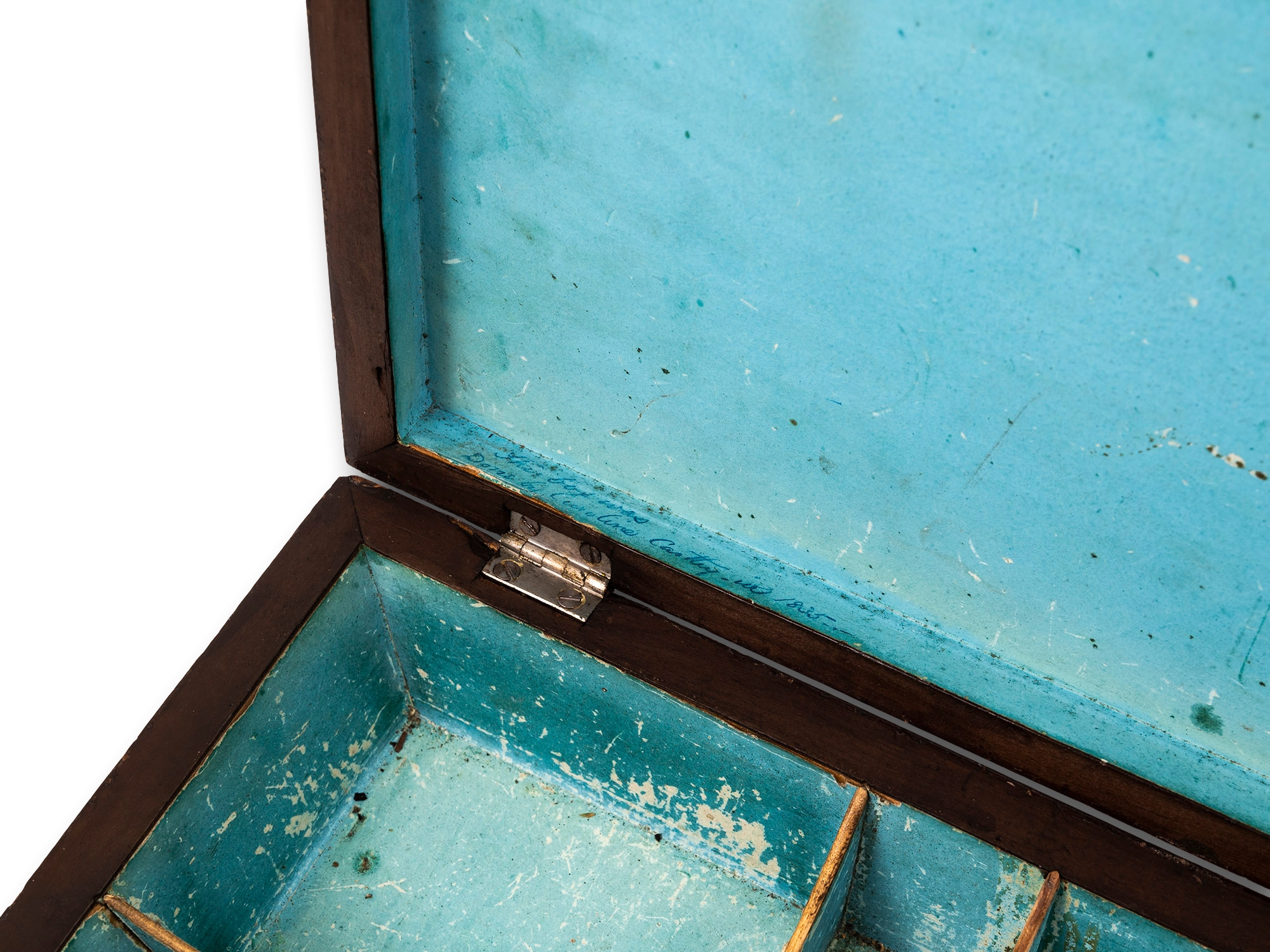Georgian Penwork Card Box
£595.00
Sycamore Wood From our Boxes collection, we are pleased to offer this Georgian Penwork Card Box. The box of slim elongated sarcophagus shape made from Sycamore and veneered in Satinwood with a raised lid and slightly convex body raised upon... Read More
Georgian Dated 1835

| Weight | 500911 kg |
|---|---|
| Dimensions | 27 × 21 × 11 cm |
| Medium | |
| Country | |
| Year | |
| Period | |
| SKU | 500911ACE |
Description
Description
Sycamore Wood
From our Boxes collection, we are pleased to offer this Georgian Penwork Card Box. The box of slim elongated sarcophagus shape made from Sycamore and veneered in Satinwood with a raised lid and slightly convex body raised upon four ebonised squashed bun feet. The Box decorated extensively to the exterior with penwork featuring a band scrolling grape vines, a band of foliage and a band of blossoming flowers. The top of the box decorated with a mother and children scene drinking and eating with a dog to the left hand side. The interior of the Card Box is lined with blue paper and has seven compartments that are separated by curved dividers. The inside edge of the box has a little message written that reads: “This box was done by Caroline Castley in 1835”. This could be a note as to who decorated the box as these boxes were often purchased bare and then decorated at a later date.
The Penwork Card Box comes complete with a working lock and a tasselled key.
Sycamore also known as Harewood is a member of the Maple family, found in Europe. It is light yellow in colour and is often a very clean wood, with a straight, fine grain. The wood is often pippy. However, these pips are usually a very similar colour to the rest of the wood making them hardly visible.
Satinwood is found in India and Sri Lanka. It has a rich golden colour and an almost reflective sheen. Satinwood is traditionally used for high quality furniture.
Penwork, or pen and ink, was used on boxes to illustrate picturesque scenes and, at times, to document a vacation or visit to a foreign country. The prints would often depict people, landscapes, birds, insects, plants, flowers, and animals, as well as stories from Greek mythology or depictions of spa towns. Each of these drawings was very accurately drawn and beautifully varnished with shellac. It is likely that some penwork was commissioned by professional artists. Many of these works were highly detailed, showcasing the skill and expertise of the artist. Penwork was primarily a pastime practised by women (some of whom were just as skilled as the professionals) which explains the presence of so many examples throughout history. These works demonstrate the mastery of the artist in producing intricate details and an attractive finish. This is why the tradition of penwork has been passed down through generations.
The Georgian era was a period in British history dating from 1714-1837, the Georgian era after the Hanoverian kings George I, George II, George III and George IV.
With every purchase from Mark Goodger Antiques, you will receive our latest catalogue, a Certificate of Authenticity, detailed care instructions for your chosen piece and an independent invoice (for insurance purposes) will be enclosed. As well as being protected by a no-hassle, money-back policy, your piece will be entirely insured during the shipping process to ensure the safety of your item.
Additional information
Additional information
| Weight | 500911 kg |
|---|---|
| Dimensions | 27 × 21 × 11 cm |
| Medium | |
| Country | |
| Year | |
| Period | |
| SKU | 500911ACE |











